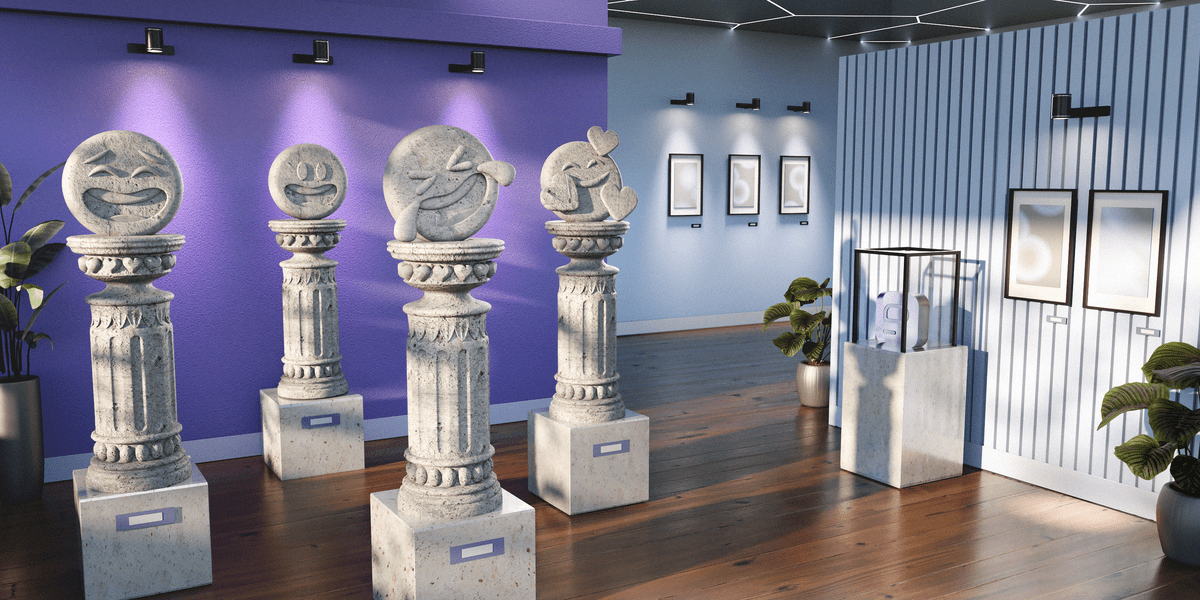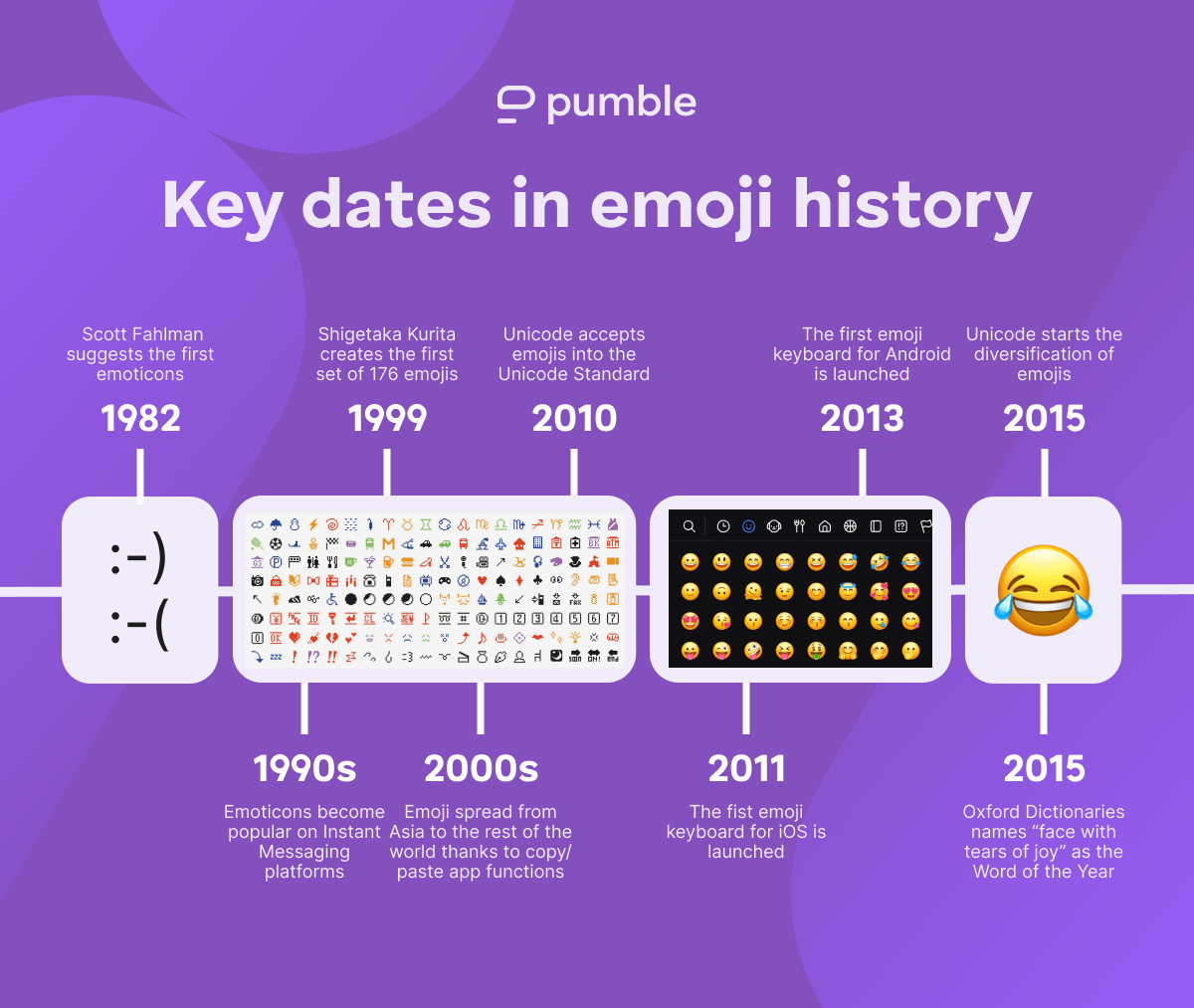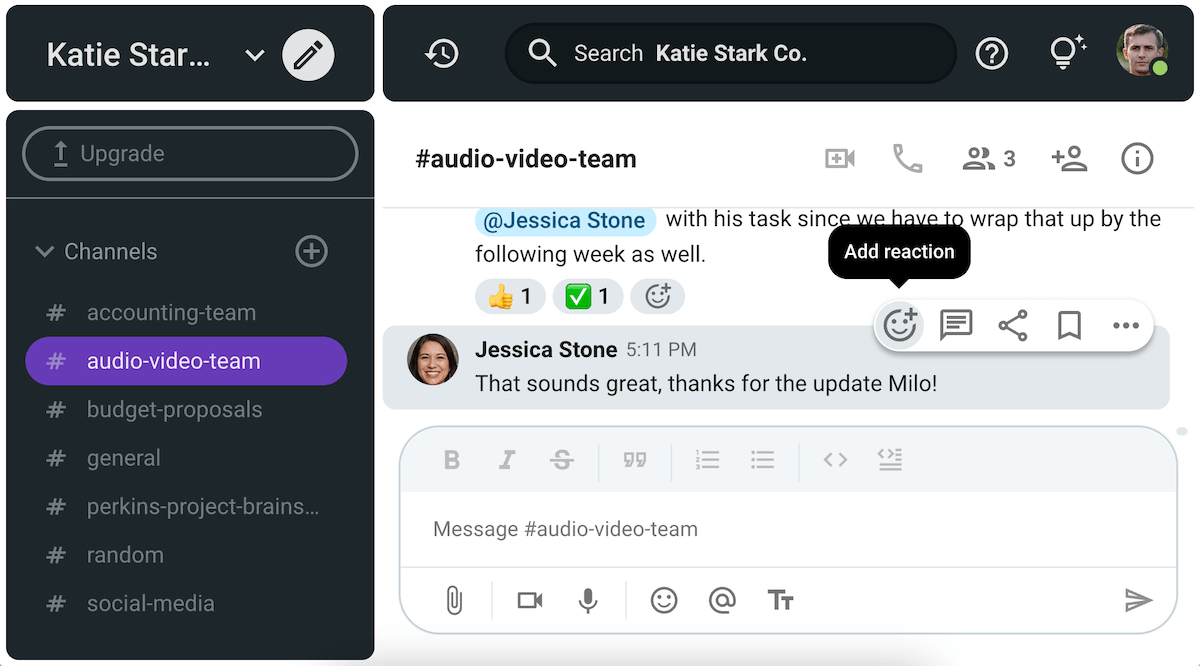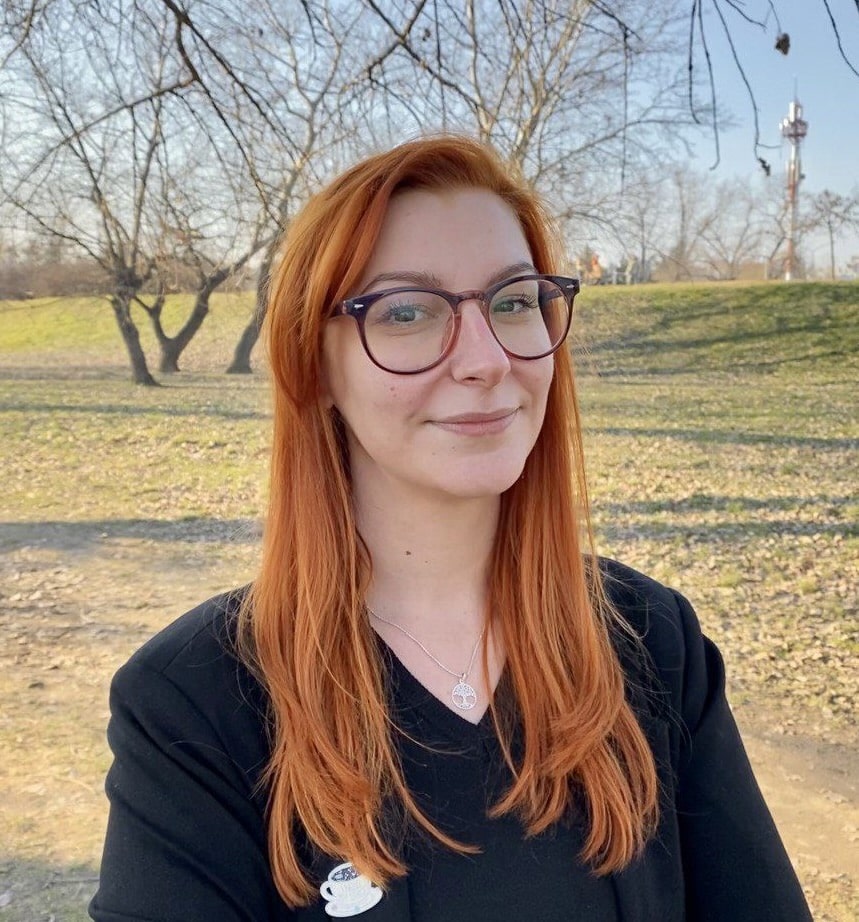The year is 1999. The Y2K panic is raging, everyone is trying to recreate the Matrix bullet scene, and the Star Wars prequels have hit the theaters creating a never-before-seen frenzy.
Meanwhile, unbeknownst to anyone, a new digital language is being born in Japan — one that will change the history of communication as we know it.
One dark and stormy night in 1999, a Japanese artist Shigetaka Kurita created the first set of emojis — 176 12-by-12 pixel drawings created to be used on Japan’s main mobile carrier’s internet platform.
OK, so maybe the night wasn’t dark and stormy. And, Kurita probably labored over his first set of emojis for much longer than one measly night.
Still, this is one of the origin stories of the emoji.
But, is Kurita really the only one to thank for being able to react with an emoji to your coworker’s 3-paragraph message on your team communication app?
Keep reading to discover the full history of emojis (because it didn’t really start with Kurita’s pixelated art).

Table of Contents
19th Century: The early history of emoji
To say emojis changed the way we communicate is an understatement. What was once a novelty that only young people used is now a standard part of messages — formal and informal — across generations.
The art Kurita created — which changed digital communication — is so important that it’s part of an exhibition in the Museum of Modern Art in New York.
However, the true history of emoji started well before the Japanese artist took matters (and pixels) into his own hands.
Believe it or not, the emoji history started way back in 1862 when The New York Times printed a transcribed copy of Lincoln’s speech with a typo in it. The editors unknowingly included what we today know as a smiley face — :).
Although accidental, this typo (probably) inspired the first intentional use of emojis in 1881, when an American satirical magazine published a piece titled “Typographical Art”. The piece depicted 4 different emotions — joy, indifference, melancholy, and astonishment — created with punctuation marks only.
It looked something like this.

The 80s: Before emojis, we had emoticons
It would take another century before we could witness the rise of the popularity of emojis.
That started in 1982, with Scott Fahlman, a computer scientist and professor who was fed up with people misunderstanding the messages on his university’s online bulletin boards.
Frustrated with the limitations of written communication, he proposed the use of “joke markers” that would make clear whether someone is being serious or not.
There were 2 original joke markers that Fahlman proposed:
- :- ( to add to serious messages and
- :- ) to mark a message as a humorous one.
Thus, modern emoticons were born.
Emoticons quickly took the world by storm and were used in informal spaces such as digital forums, message boards, online bulletins, and chat rooms throughout the 90s.
Just like any other aspect of language, emoticons quickly evolved and became advanced.
Thanks to that evolution, people were able to use a combination of symbols and punctuation marks to convey not only seriousness and humor but also complex emotions and thoughts.
The best examples of that are probably the shrugging and the sleeping emoticons that looked like this:
- ¯\_(ツ)_/¯
- (︶。︶✽)
Although advanced and able to convey a whole array of emotions, these dynamic emoticons lacked one thing — convenience.
Since people needed to combine quite a few symbols to create them, emoticons weren’t as convenient as some people would have liked them to be — which is what we have to thank for the modern emoji.
The 90s: The helping hand of instant messengers
By 1997, emoticons were everywhere. Informal messages were riddled with them, and people were quick to create new ones to convey messages, thoughts, and feelings.
This inspired instant messaging apps to create their own sets of picture-like icons that people could use instantly instead of wasting time creating their own emoticons.
The most famous ones were Buddy Icons, which dominated early Netspeak and the online space in ‘97 and ‘98. Both useful and hilarious, these icons were the “it” thing to use in the late 90s.
However, they were quickly dethroned at the very beginning of 1999, when Kurita created the first set of real emojis.
Create and use custom emojis in Pumble — an instant messaging app
1999: The birth of modern emoji
Kurita’s set of 176 12-by-12 pixel images depicted objects, symbols, and characters, which was a real shift compared to the previously used emoticons (that mainly used punctuation marks to create faces and convey feelings or situations).
Still, even though it lacked faces, Kurita’s emoji set took off in popularity in Asia, and soon after, the entire world started playing catch-up.
So, we have the Japanese to thank for emoji. But did you know they also coined the word emoji? It comes from the combination of 2 Japanese words — e, which means “picture” and moji, which means “letter or character”.
Originally, Kurita created his set of emojis to be used on an emoji keyboard to convey information concisely or provide additional context to the original message.
This was a massive hit among people because emojis helped bridge the gap between written and spoken communication. As you’re probably aware, it’s notoriously hard to convey tone and subtext in written messages by using only words. Emojis help with that, since they allow for an influx of additional information and context, all neatly packaged into one image.
Emojis became so popular that other Japanese carriers quickly started creating their own sets, and it wasn’t long before the rest of the world took notice. So, the emojis quickly migrated to other markets.
💡 Pumble Pro Tip
Emojis can really make a difference when it comes to the nuance of your messaging. However, that’s not always the best option, especially in the workplace. To find out how to improve your written communication at work, read the following articles:
2000s: The beginning of a global phenomenon
Have you sent an emoji to someone today?
Chances are, you have — 92% of people use emojis in everyday communication, according to Pumble’s Emoji Statistics.
Emoji use is so prevalent that teenagers and young adults prefer communicating via emojis over words. They even include emojis in workplace communication — 97% of Gen Z employees like to infuse their personality into their communication with emojis, according to the CAKE.com research on Gen Z.
What’s more, data suggests that emojis transcend not only language but also culture and location — which isn’t surprising, given that they can help you successfully overcome communication barriers.
This is only possible because, today, we have 3,782 emojis at our disposal — a far cry from the original 176!
Of course, we didn’t instantly go from 176 emojis in 1999 to almost 4 thousand the next year.
After the original set was introduced to the public and emojis started gaining in popularity, US tech giants introduced their own emojis —
- First on instant messaging platforms in 2003,
- Then on email in 2007, and finally
- On mobile phone apps in 2008.
In 2009, a petition was filed to the Unicode Consortium — a global non-profit organization that maintains text standards across different types of computers and computer programs — to recognize emojis on a global level and standardize them across various operating systems.
Unicode accepted the petition in 2010 and standardized 625 emojis.
Back then, users had to copy the emojis they found on the Internet and paste them into their own messages because most didn’t have an emoji keyboard (unlike the Japanese users).
However, that quickly changed and the first emoji keyboard was introduced in 2011 for iOS users and 2013 for Android users.

💡 Pumble Pro Tip
Emojis can transcend culture and help people communicate even when they don’t speak the same language. But not every culture perceives emojis in the same way — which can cause real problems in the workplace. Read the following article to find out how cultural differences affect emoji interpretation:
Present day: A growing library and diversification
After the emoji keyboard was introduced, users quickly started utilizing it to its full potential. In fact, emoji use became so prevalent that, in 2015, the Oxford Dictionaries declared the “face with tears of joy” as its word of the year.
Realizing they were being used worldwide, but that they weren’t really representative of that, Unicode took steps in 2015 to make emojis more inclusive.
The diversification of emojis started with the introduction of skin-tone modifiers. The following year, emojis got a few other additions, making them even more inclusive — like “person with a headscarf” for example.
Unicode has also taken other steps to ensure emojis are representative of society by including:
- Female emojis with stethoscopes and hard hats,
- Emojis that represent people with disabilities, and
- Gender-neutral emojis.
So, we expect to see further diversification of emojis in the years to come.
In late 2024 and early 2025, Unicode is expected to add 8 new emojis to its library. One of them — face with bags under the eyes — seems to be a particularly welcome addition, at least according to online reactions.
As emojis became more inclusive and diverse, emoticons became a thing of the past. One research shows that, although once quite popular, emoticons couldn’t hold a candle to emojis. Emojis are not only used more frequently but also with a more positive attitude and a deeper level of identification, as shown in the research paper titled Enhanced Sentiment Classification Using Geolocation Tweets.
So, we can say with certainty that we’re living in the era of emoji dominance.
Emoji: A helpful linguistic addition or source of confusion?
The role of emojis in modern human communication is so big that we started to comprehend them better than facial expressions — well, at least men have.
According to one research, men recognize emotions on emojis better than on human faces. This probably has to do with the fact that emojis are less ambiguous, at least when it comes to complex emotions — due to the lack of fine details and morphological features.
Of course, not all emojis are unambiguous.
Although emojis can help us overcome one of the barriers of written communication — by relaying indirect meaning — emoji use can also cause confusion because not everyone interprets the same emoji in the same way.
According to a study done by Preply on the most confusing emojis, 81% of people said that someone else’s emojis caused confusion or miscommunication. What’s more, 48% of people said that emoji use caused an uncomfortable situation for them.
Here are the most confusing emojis from 2024.
| Rank | Emoji (name and appearance) | What people think it means |
|---|---|---|
| 1 | Nail polish 💅 | 40% Classy/bougie 23% Nail polish 22% “Don’t mind me, hehe” 15% Self-care |
| 2 | Dashing away 💨 | 38% Dashing away 34% Farting 15% Out of breath 13% Smoking |
| 3 | Upside-down face 🙃 | 38% Sarcasm 36% Smiling through pain 16% Same meaning as a regular smiley face 10% Passive aggression |
| 4 | Persevering face 😣 | 40% Frustration 31% Cringe 17% Helplessness 7% Sadness 5% Perseverance |
| 5 | Tipping hand 💁 | 41% “Oh well” 35% Feeling sassy 19% “I have a suggestion” 5% Sarcastic |
| 6 | Dotted line face 🫥 | 43% “I want to disappear” 25% “I feel invisible” 25% Speechless 5% Depression 2% Submissiveness |
| 7 | Money with wings 💸 | 50% Losing money 24% Gambling 15% Flaunting or showing off 11% Transferring money |
| 8 | Sleepy 😪 | 51% Sadness 29% Sleepy or tired 18% Sickness 2% Disgusted |
| 9 | Fearful face 😨 | 63% Shocked or surprised 17% “This is terrible news” 11% Fearful 7% Sickness 2% “I just had a revelation” |
| 10 | Person getting a massage 💆 | 77% Massage 16% Rubbing temples out of frustration 7% Exhausted |
As new emojis keep being added to the official library, we expect this list to change over the next few years — after all, even though they have official names, emojis are open to interpretation.
Still, emojis are a language (or at least an aspect of language), and, just like any other language, we expect them to evolve even further to facilitate communication in the years to come.
Use emojis to your advantage — With Pumble
Love them or hate them — emojis are here to stay.
Today, you can leverage emojis to ensure clear and effective communication even in the workplace, especially if you use tools like Pumble.
Pumble, an all-in-one workplace communication tool, allows you to utilize emojis to their full extent to:
- Communicate better,
- Collaborate faster,
- Connect with your teammates, and
- Foster engagement in the workplace.
In Pumble, you can use emojis to react to other people’s messages to quickly communicate your thoughts.
What’s more, you can also create your own custom emojis, to tailor your reactions and communication to your workplace or team. That way, you’ll lower the chances of suffering from “emoji confusion”.

With Pumble, you can use emojis in:
- Direct messages,
- User groups,
- Channels,
- Threads, or
- Video calls.
And all that for quite an affordable price!
So, what are you waiting for?
Boost your workplace communication with emojis!







